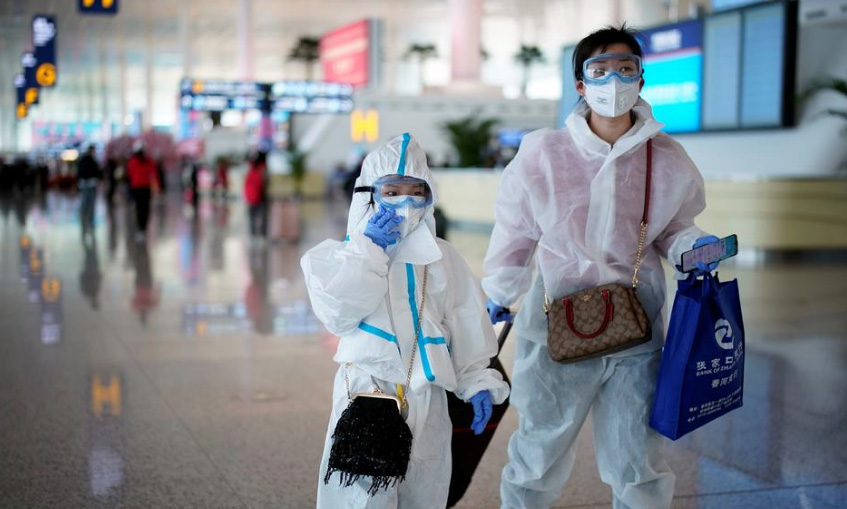Wuhan (China): The Chinese city of Wuhan where the new coronavirus emerged ended its more-than two-month lockdown Wednesday, even as a small northern city ordered restrictions on residents amid concern about a second wave of infections.
China sealed off Wuhan, a central city of 11 million people, January 23, a drastic step that came to symbolise its aggressive management of the virus. More than 50,000 people in Wuhan were infected, and more than 2,500 of them died, about 80 per cent of all deaths in China, according to official figures.
The virus has since spread around the world, infecting more than 1.4 million people, killing 82,000 of them and wreaking havoc on the global economy as governments imposed lockdowns to rein in its spread.
While China has managed to curb its coronavirus epidemic the measures to contain it have exacted a heavy economic and social toll, with many residents in recent days expressing relief as well as uncertainty and worry over the lingering danger of infection.
“I’m going to see my parents,” Wang Wenshu told reporters as she waited to check in at the Tianhe airport here, which reopened Wednesday. “Of course I miss them. Stop asking me about it or I’m going to cry,” she added.
Some travellers wore full protective suits, long raincoats or face shields.
This city has slowly been returning towards normal, with people officially allowed to enter the city from March 28, although restrictions remain. Residents have been urged not to leave Wuhan or Hubei province, or even their neighbourhood, unless absolutely necessary.
“We are acutely aware that we must not relax as we have not claimed final victory,” Hubei vice- governor Cao Guangjin said at a news conference Wednesday. “We need to remain calm, and be just as cautious at the end as at the beginning,” he added.
Wuhan has reported just three new confirmed infections in the past 21 days and only two in the past two weeks.
But even as this city is slowly coming came back to life, new imported cases in the far northern province of Heilongjiang surged to a daily high of 25, fuelled by an influx of infected travellers crossing the border from Russia.
Suifenhe city announced Wednesday restrictions on the movement of citizens similar to the measures this city has endured. People must stay in their residential compounds and only one person per family can leave once every three days to buy necessities, and must return on the same day, state-run CCTV reported.
“While the whole country is celebrating the unlocking of Wuhan, few noticed that Heilongjiang is under enormous pressure dealing with infections coming over the border,” one person wrote on the Weibo social media platform.
Some 55,000 people were expected to leave this place by train Wednesday. By early morning, more than 10,000 had left by plane, an airport official said. Flights to Beijing and international locations have not resumed.
“I’m very happy, I’m going home today,” migrant worker Liu Xiaomin said as she stood with her suitcases in Wuhan’s Hankou railway station, bound for Xiangyang city.
People from here arriving in Beijing must undergo two rounds of testing for the virus. China is maintaining strict screening protocols, concerned about any resurgence in infections by virus carriers who exhibit no symptoms and infected travellers arriving from abroad.
China’s new coronavirus cases doubled Tuesday as the number of infected travellers from overseas surged, while new asymptomatic infections more than quadrupled. New confirmed cases rose to 62 Tuesday from 32 a day earlier, the National Health Commission said, the most since March 25. New imported infections accounted for 59 of the cases.
To stem infections from outside its borders, China has slashed the number of international flights and denied entry to virtually all foreigners. It also started testing all international arrivals for the virus this month.
Agencies
